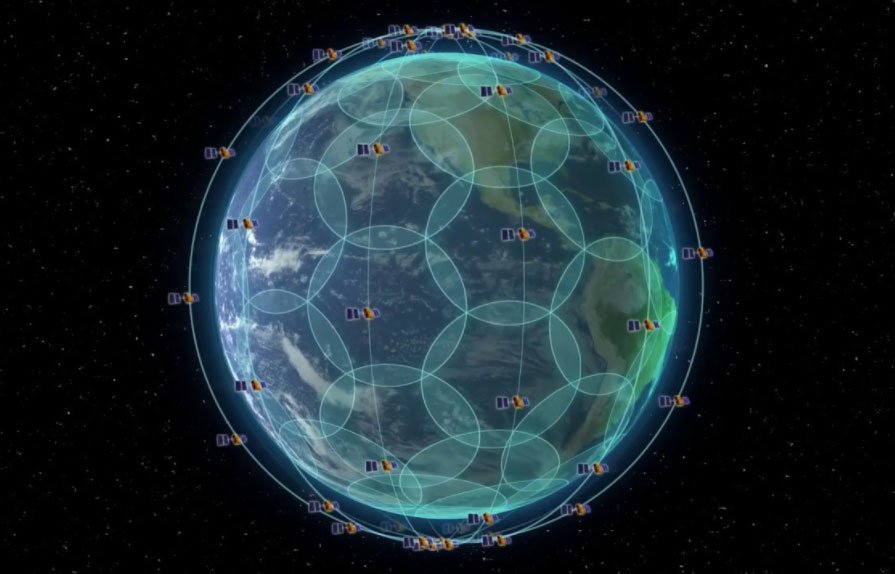Delivering GNSS Augmentation over a Low Earth Orbit (LEO) satellite constellation provides both cost and efficiency benefits for vessels operating globally in the Offshore Energy sector. Using a LEO constellation reduces the risk of potential downtime due to its unique structure which provides a very robust, resilient and truly global communications service to deliver GNSS.
All existing GNSS Augmentation services currently use geo-stationary (GEO) satellites which are roughly 35,000km (22,000 miles) above the earth’s surface, whilst Iridium LEO satellites are approximately 780km (485 miles) above the Earth’s surface. One of the many key advantages of using a LEO satellite constellation over GEO is that LEO satellites offer stronger signals and faster connections through smaller antennas with lower power requirements.
GEO satellites only provide coverage to around 65° N/S, with the GEO signal losing strength as the user tracks away from the equator. The LEO constellation provides truly global coverage and is a totally seamless service. The Iridium LEO service has 66 operational satellites plus 9 spares, it is a fully meshed service with built-in redundancy, with the user always seeing 2 to 4 LEO satellites at anytime, anywhere in world. There are 6 orbital planes spaced 30 degrees apart, 11 satellites per plane, 60 degrees coverage cone per satellite providing 100% coverage at the surface including coverage at the poles.
In addition, Iridium replaced all 66 operational and 9 spare satellites in 2019, without any disruption to the service and is one of the largest commercial satellite constellations.
The LEO network uses L-band frequencies to communicate with the users. These frequencies are more resilient to weather than the Ku / Ka band frequencies used by most GEO networks, providing reliable communications even in adverse conditions in the air, on the sea, or on the ground.
Together, the LEO satellites create a global mesh of coverage. In space, each satellite is cross-linked to four others, providing advantages in reliability and resiliency. These cross-links provide network optimisation and redundancy, ensuring that data can be rerouted and transmitted at the fastest possible speed no matter what happens on earth or in space. A vessel will always be connected to 2 – 4 satellites anywhere in the world thus reducing the risk of masking or blocking when operating near a large structure, such as a rig or platform.
GEO satellites are also subject to an increased risk of masking, as they remain in the same place above the earth’s surface, so if a user loses signal on the GEO satellite through masking the user will remain masked until they move. Whilst LEO satellites are in constant orbit resulting in less risk of masking.
LEO communications also provide the opportunity of a 2-way comms capability – a feature no existing providers currently have. This allows remote monitoring and provides direct [or automated] user quality control and diagnostic feedback, as well as advanced enable/disable for smart billing. Additional advantages include configuration and customisation of the receiver remotely and the ability to provide software upgrades, if needed, therefore reducing the need for an expensive engineer to attend the vessel offshore.
Current Precise Point Positioning (PPP) GNSS suppliers use GEO satellites to deliver augmentation to customers. GEO satellites are a single point of failure; having a new GNSS service delivered over LEO solves ‘redundancy’ problems. Until now, there has always been a risk of communication outages, which may result in costly downtime and with vessel rates costing thousands of USD per day, any amount of downtime can be very costly.
Iridium’s LEO satellite constellation is relied upon by the Federal and Civil Aviation Authorities for aircraft safety and is utilised to deliver the Global Maritime Distress Safety System for maritime safety. The same constellation is now being utilised to deliver PPP GNSS augmentation which provides a truly global, intelligent and independent service which can eliminate the single point of failure for the customer.
A LEO delivery mechanism provides a unique, global and resilient network minimising the customers exposure to risk, cost, and stress.
If you want to learn more about DDK Positioning’s unique global GNSS service, delivered via LEO, please contact us.
